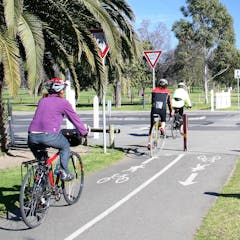
Articles on Urban community
Displaying 1 - 20 of 60 articles

A big reason the idea is gaining momentum globally is that the benefits for the health of individuals, communities and the environment are clear and almost immediate.

Residential ‘stroads’ – neighbourhood streets that have become rat runs for through traffic – can be turned back into safe, mixed-use streets that put residents’ and children’s needs first.

Beautiful shopping streets attract people — and that’s good for business. Images of ten reimagined local shopping streets show how they can become the beautiful hearts of their local communities.

Seeing Japanese parents send toddlers out on their own to do errands has shocked viewers. But not that long ago our neighbourhoods were also child-friendly, and we can make them so again.

The proportion of people actually living in tiny houses hasn’t been increasing but the movement has prompted debate about living smaller and more sustainably.

If communities don’t understand and support local heritage protections, perhaps that’s a reflection on how the system works and not just evidence of a need for public education.

Third places – where people meet outside of work and home – foster a sense of belonging, particularly for retirees. COVID-19 restrictions shut them down, so can online communities fill the void?

The hard lockdowns of whole blocks have been challenging for many residents due to their histories of trauma, their housing conditions and a lack of communication and understanding from authorities.

It’s people, in addition to architecture or history, that make some meeting places worthy of heritage protection. Social values are now among the listing criteria, but many such places remain at risk.

A friendly wave from a neighbour is one of life’s incidental but invaluable interactions. Porches, balconies, front yards and footpaths have proven their importance as cogs of neighbourhood life.

Apartments house one in ten Australians, including a higher share of low-income households than other housing types. A new study identifies why some high-density neighbourhoods work better than others.

We are all finding out about neighbourhood liveability as we stay home for the coronavirus lockdown. What we learn about local strengths and weaknesses can help us improve our communities in future.

Most of the activities that define city life we do together. Now that we are having to get used to more isolated lives, will this have lasting social impacts or will city life resume as before?

Across the world, people have spontaneously gathered on balconies to create music – and community – in the face of isolation and fear.

Community projects play a vital role in city life.

Air conditioning isn’t the answer for everyone, especially for residents of the less affluent – and often hotter – suburbs of our big cities. But there are other ways to make hot days more bearable.

A major investment in renewing the urban centre of Dandenong is starting to pay dividends. But while research has found three keys to success, the benefits haven’t reached everyone.

When primary school children in a disadvantaged part of Sydney were asked to map what they valued in the area, their choices were revealing and sometimes surprising.

When so much of the green space in our cities is in the form of nature strips, current restrictions on plantings are denying us the many social and environmental benefits of more diverse greenery.

Planners understand the key elements of urban communities that will improve residents’ health and well-being. They also need to be able to convince others to create such communities.
